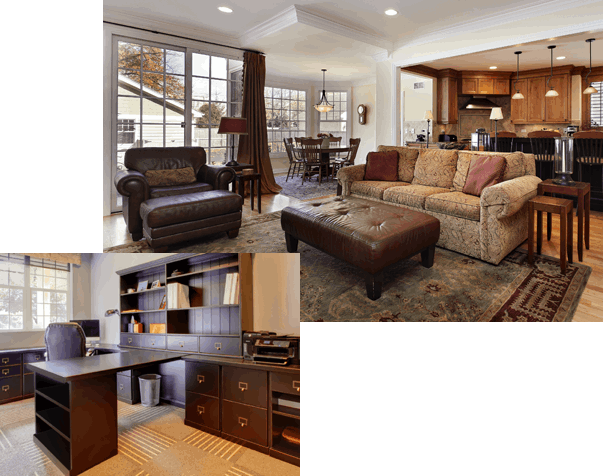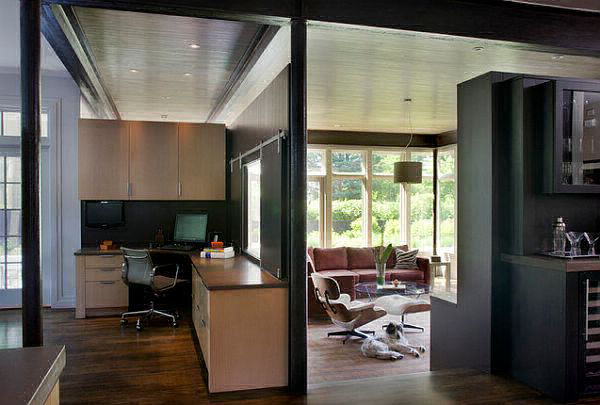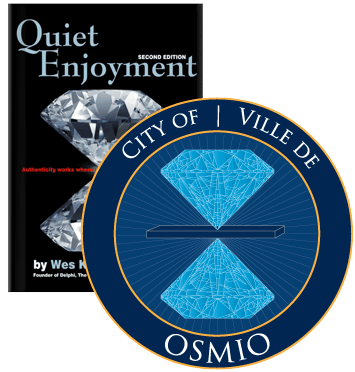Your home is a place where family members and invited friends gather to share stories and memories and pictures, make plans, keep in touch with each other in a quiet and private space.
Imagine if your home were built in such a way that it had secret passageways that didn’t show up on the blueprints and that you didn’t even know about.
Imagine if unknown intruders regularly entered your home, watched and listened as you chatted with guests, took notes on your purchasing habits and your political and religious leanings and family situation and age and gender, and sold that information to marketers, researchers and political organizations.

As soon as you found out about that, you’d call the police, wouldn’t you? The cops would treat it as a burglary, a criminal offense. A felony.
Well, that’s exactly how your second home was built – and how it is burglarized. All the time.
Yes, you do have a second home.
It’s your “timeline” or other personal page in a social network. It’s where information about you is accumulated, then stolen by your landlord, the big social media company that puts that stolen personal intellectual property of yours on their balance sheet as a money-making asset.
You deserve a better second home, that is, a better social network.

A real estate principle called “quiet enjoyment” identifies the sum total of what you, the occupant of a residence or office, are entitled to. Quiet enjoyment means peace and privacy and a building that works the way it’s supposed to. Those hidden passageways would be a completely illegal breach of quiet enjoyment.
Your physical home has an occupancy permit issued by city hall. It means that the structure is designed and built to provide quiet enjoyment and is therefore legally habitable.
Would your second home – your timeline on your social network – be issued an occupancy permit attesting to its habitability? Certainly not!

Just like your physical home, your new second home is your place. Only people you invite in are able to know what takes place in it.
Your new second home has different rooms for different purposes. It has a living room where you entertain your friends, and a downstairs den for your kids and their friends.

Full width intro with image background, color overlay and a picture on the left. You can easily change the size of image in block parameters.
Privacy!
Your new home has an office that’s just for your family members and your financial and legal advisors.
And, most importantly, there is one file cabinet for each family member. It’s called your MOI™, for MyOwnInformation™. Information in your MOI is absolutely under your control. It’s protected through the use of both PKI technology and with legal components as well. Your personal information becomes your personal intellectual property, protected by both copyright law and secrecy law.

If your home is like many, you may give trusted cleaning people, pet caretakers, caregivers or maintenance people permission to be in your home while you’re away. Similarly, you may trust your healhcare provider, insurance company, or school administrators to have access to constantly-updated specific items of personal information in your MOI, to eliminate many of life’s administrative chores. Just as you require those personal assistants to have keys to get into your physical home, your online administrative contacts will use their PKI credentials to gain access to only those specific personal files to which you have granted access.

You get to your new second home the same way you get to your physical home. You use the public roadways.
While you use the public roadways to get to your home, your home isn’t part of that highway, right? The indoor space that is your home is reached via the public roadways but is not part of that roadway system – of course.
They used to call the internet the “information highway” and the name still fits. The Internet is an outdoor public transport system in exactly the same way that the physical roadways leading to your home are an outdoor public transport system. The Web is simply the finish layer of markings and signage that make the internet navigable.
Your new home may stand by itself out on the Web, or it may be located inside a Village®, that is, an online community offered by your favorite magazine, newsletter, blog, or other “audience aggregator.”

In order to qualify as a Village®, an online community accepts a city named Osmio as its administrative capital. Osmio provides a set of ordinances that the Village® adopts when it is chartered. The Buildings Department of the City of Osmio audits all software code for residences and other buildings it its jurisdiction, which includes the Villages® and other spaces.
In order for your new home to recognize that it’s you entering your home, Osmio ordinances don’t accept weak authentication methods such as passwords. Instead, another Osmio department, the Vital Records Department, issues digital identity certificates that prove your identity to a measurable level of certainty. For that matter anyone entering your home, or licensed by you to access something in your MOI personal filing cabinet, must be identified with an identity certificate issued by the Osmio Vital Records Department (Osmio VRD).

Just as when you build or buy a physical home the cost varies with size, amenities, location and other factors, so it is with your new second home. Check out the model homes on this site to help assess your needs.
Osmio’s ordinances require that a percentage of new residences in each Village® be set aside for those who are not in a position to pay for them.